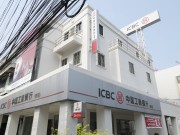Schroders Chief Economist & Strategist Keith Wade: 2022 Outlook of Global Economy
This is a 2022 Outlook on Global Economy by Keith Wade, who is the Chief Economist & Strategist at Schroders (January 2022):
Schroders is a global active asset manager managing more than £574.4 billion (€641.7 billion / $785.1 billion 31/12/20) assets and managed locally by 42 investment teams worldwide. As a global active asset manager, the way we direct capital not only shapes the financial returns we achieve for our clients but also the impact that the companies in which we invest on their behalf might have on society.
2022 Outlook of Global Economy

The emergence of the Omicron Covid variant has reminded us of the uncertainties which remain around the global pandemic. Despite these, we expect 2022 to be another good year for growth as the global economy continues its recovery. We do, however, see growth cooling following an exceptionally strong 2021, as the massive support offered by governments and central banks during the pandemic’s initial stages begins to fade.
Inflation should moderate, but policymakers and investors face a difficult period in the interim. Our forecast is for 2021 global GDP growth of 5.6% to be followed by 4.0% growth in 2022. We see global inflation at 3.4% for 2021 and rising to 3.8% in 2022.
The economic recovery following the pandemic has differed from economic recoveries of the past. This has thrown up unanticipated problems in supply chains which have been beset by bottlenecks. We’ve also seen issues with labour markets, where companies have struggled with worker shortages. Bottlenecks and shortages have pushed inflation and wage rates higher than expected.
The unbalanced nature of the recovery can be seen in figures tracking the spending patterns of the highly important US consumer (see chart 1). These show that retail sales volumes, or real retail sales, are now more than 10% above their pre-pandemic levels. In contrast, real service sector spending remains some 2% short where it was before Covid-19.
The recovery has disproportionately been driven by the goods sector and this has created extraordinary pressure on supply chains and commodity markets. It took four and a half years for retail sales volumes to surpass previous levels by this degree after the Global Financial Crisis had ended in 2009. On this occasion it has taken 18 months.
The impact of bottlenecks is apparent in the recent loss of momentum in retail sales volumes. This loss primarily reflects the impact of higher inflation as retailers faced with restricted supply have succeeded in passing on their own cost increases. In nominal terms, sales have continued to forge ahead and are some 20% above pre-pandemic levels.
Higher inflation reflects an imbalance between restricted supply and strong demand. Whilst central banks cannot affect the former (speed the delivery of cargo, say, or, in the case of renewable energy, make the wind blow harder), they can restore balance given they have the tools to address the strength of demand.
Policy support fades in 2022
We expect the withdrawal of emergency levels of support by central banks and governments to play an important role in shaping economic activity in 2022. The massive fiscal stimulus policies (government spending and taxation policies designed to support economies over the short term) in response to the pandemic are already winding down in the US and UK.
Although government spending will remain strong, overall fiscal policy will be less supportive in 2022. This should not be a surprise after the “shock and awe” fiscal largesse of 2021. In the US the Bipartisan Infrastructure Deal will start up next year and the larger Build Back Better package currently winding through Congress should help (if it gets through the Senate). The overall “growth impulse” from fiscal policy however will be less than in 2021. It’s a similar story in the UK where corporate and income taxes are set to rise next year along with higher National Insurance Contributions (payroll taxes).
In contrast, the eurozone stands out as fiscal spending is expected to remain strong due to Europe’s recovery plan. Stimulus is slightly less than in 2021, but still significant. Meanwhile, China is expected to keep fiscal stimulus going in 2022 through higher local government borrowing, but some of it will be due to banks being encouraged to lend more.
With regards to monetary support (short-term policies by central banks designed to stimulate economies) we also see a move in a less positive direction in the US and UK. Here central banks are ending pandemic related quantitative easing (QE) programmes which have been used to inject money directly into the financial system. The Bank of England (BoE) and US Federal Reserve (Fed) are also poised to raise interest rates.
We expect the BoE to raise rates in December 2021 (when the bank’s Covid-era QE programme is also on course to reach its full size) and February 2022. Meanwhile, a patient Fed is expected to raise rates in December next year after fully tapering asset purchases in June (these asset purchases are the means by which many central banks have injected money into the financial system under QE). We then expect interest rates in both economies to rise further in 2023.
Our judgement is that central bank policy goes from positive to neutral (rather than negative) as interest rates are still low relative to the “equilibrium” rate. When an economy is at full capacity this is the rate required in order to avoid either overstimulation (and possibly undue inflationary pressures) or under-stimulation (possibly resulting in economic contraction and the risk of deflation).
Private demand to step up?
These changes should not be surprising as support had to come to an end once the recovery had taken hold. However, for growth to be maintained we need to see a hand-off from governments and central banks to the private sector.
On this front the consumer is critical and here we are looking for households to spend the savings they accumulated during lockdowns. In practice this would mean a fall in the savings ratio below its pre-pandemic average of 7.5% as excess savings are spent.
The US savings rate has already fallen significantly in 2021, but it is critical for consumption that it continues to decline in 2022. This is because of the squeeze on real earnings from higher inflation, albeit we expect US and global inflation to moderate in the second half of next year.
The story in the eurozone and UK is similar although we estimate that households in these economies are at an earlier stage in running down their excess savings. Judging the situation in China is more difficult due to a lack of data, but it’s believed there are less excess savings than in the West.
Divergent policy outcomes
For each of the main economic blocs we have scored the different components of monetary and fiscal policy and the potential for pent-up demand. On this basis we see considerable swings between 2021 and 2022 for the US and UK, from maximum stimulus to a more modest or neutral stance. The eurozone remains more full on, while China swings toward more stimulus on both the monetary and fiscal side (see table, below).
We expect the divergence between the US/UK and eurozone/China will create opportunities in bond and foreign exchange markets. We also note many uncertainties around inflation and growth, not least those resulting from supply chain bottlenecks and labour shortages persisting. Higher wage growth feeding through into costs and prices could result in higher-than-expected inflation and weaker growth, at risk of a “stagflationary” outcome.
The emergence of the Omicron variant occurred after we finalised our forecasts, but clearly increases the risk of new restrictions on activity and renewed supply side disruption. At this stage it is too uncertain to judge the macro impact, only that it adds to the stagflationary risks in the world economy.
Important Information
This document is intended to be for information purposes only and it is not intended as promotional material in any respect nor is it to be construed as any solicitation and offering to buy or sell any investment products. The views and opinions contained herein are those of the author(s), and do not necessarily represent views expressed or reflected in other Schroders communications, strategies or funds. The material is not intended to provide, and should not be relied on for investment advice or recommendation. Any security(ies) mentioned above is for illustrative purpose only, not a recommendation to invest or divest. Opinions stated are valid as of the date of this document and are subject to change without notice. Information herein and information from third party are believed to be reliable, but Schroder Investment Management (Hong Kong) Limited does not warrant its completeness or accuracy.
Investment involves risks. Past performance and any forecasts are not necessarily a guide to future or likely performance. You should remember that the value of investments can go down as well as up and is not guaranteed. You may not get back the full amount invested. Derivatives carry a high degree of risk. Exchange rate changes may cause the value of the overseas investments to rise or fall. If investment returns are not denominated in HKD/USD, US/HK dollar-based investors are exposed to exchange rate fluctuations. Please refer to the relevant offering document including the risk factors for further details.
This material has not been reviewed by the SFC. Issued by Schroder Investment Management (Hong Kong) Limited.
Schroder Investment Management (Hong Kong) Limited Level 33, Two Pacific Place, 88 Queensway, Hong Kong www.schroders.com.hk
About Schroders
As a global active asset manager, the way we direct capital not only shapes the financial returns we achieve for our clients but also the impact that the companies in which we invest on their behalf might have on society. The relationship between these two outcomes has rapidly evolved as we see a fundamental shift in how companies are viewed and valued. Understanding the impact that they can have on society and the planet is crucial in assessing their ability to deliver risk-adjusted profits.
Our ongoing success is built on a history of experience and expertise, whereby we partner with our clients to construct innovative products and solutions across our five business areas consisting of Private Assets & Alternatives, Solutions, Mutual Funds, Institutional and Wealth Management and invest in a wide range of assets and geographies. By combining our commitment to active management and focus on sustainability, our strategic capabilities are designed to deliver positive outcomes for our clients.
We are responsible for £574.4 billion (€641.7 billion/$785.1 billion 31/12/20) assets of our clients, managed locally by 42 investment teams worldwide. As a global business with over 5,500 talented staff across 35 locations, we are able to stay close to our clients and understand their needs. We have over 200 years of experience in investment and innovation.
Visit: www.schroders.com.hk
Sign Up / Register
Caproasia Users
- Manage $20 million to $3 billion of assets
- Invest $3 million to $300 million
- Advise institutions, billionaires, UHNWs & HNWs
Caproasia Platforms | 11,000 Investors & Advisors
- Caproasia.com
- Caproasia Access
- Caproasia Events
- The Financial Centre | Find Services
- Membership
- Family Office Circle
- Professional Investor Circle
- Investor Relations Network
Monthly Roundtable & Networking
Family Office Programs
The 2025 Investment Day
- March - Hong Kong
- March - Singapore
- July - Hong Kong
- July - Singapore
- Sept- Hong Kong
- Sept - Singapore
- Oct- Hong Kong
- Nov - Singapore
- Visit: The Investment Day | Register: Click here
Caproasia Summits
- The Institutional Investor Summit
- The Investment / Alternatives Summit
- The Private Wealth Summit
- The Family Office Summit
- The CEO & Entrepreneur Summit
- The Capital Markets Summit
- The ESG / Sustainable Investment Summit



































